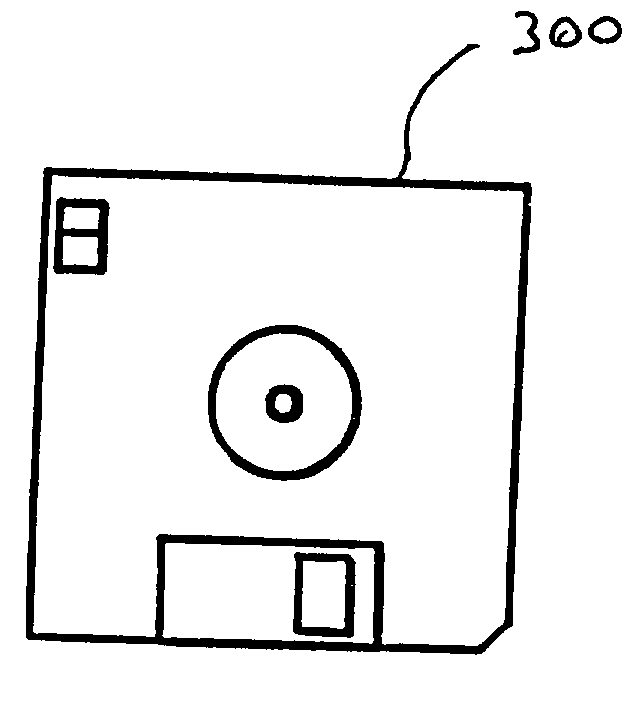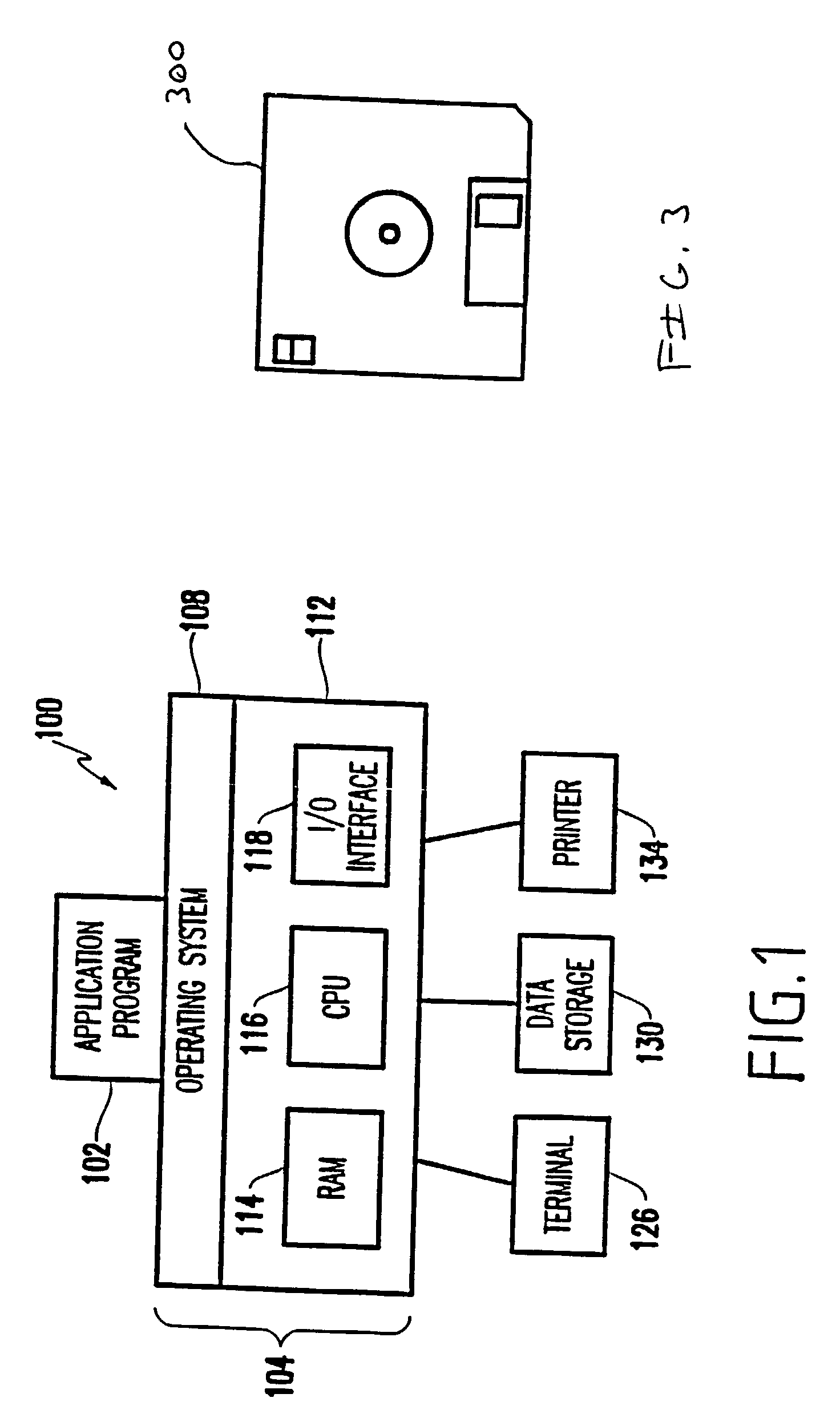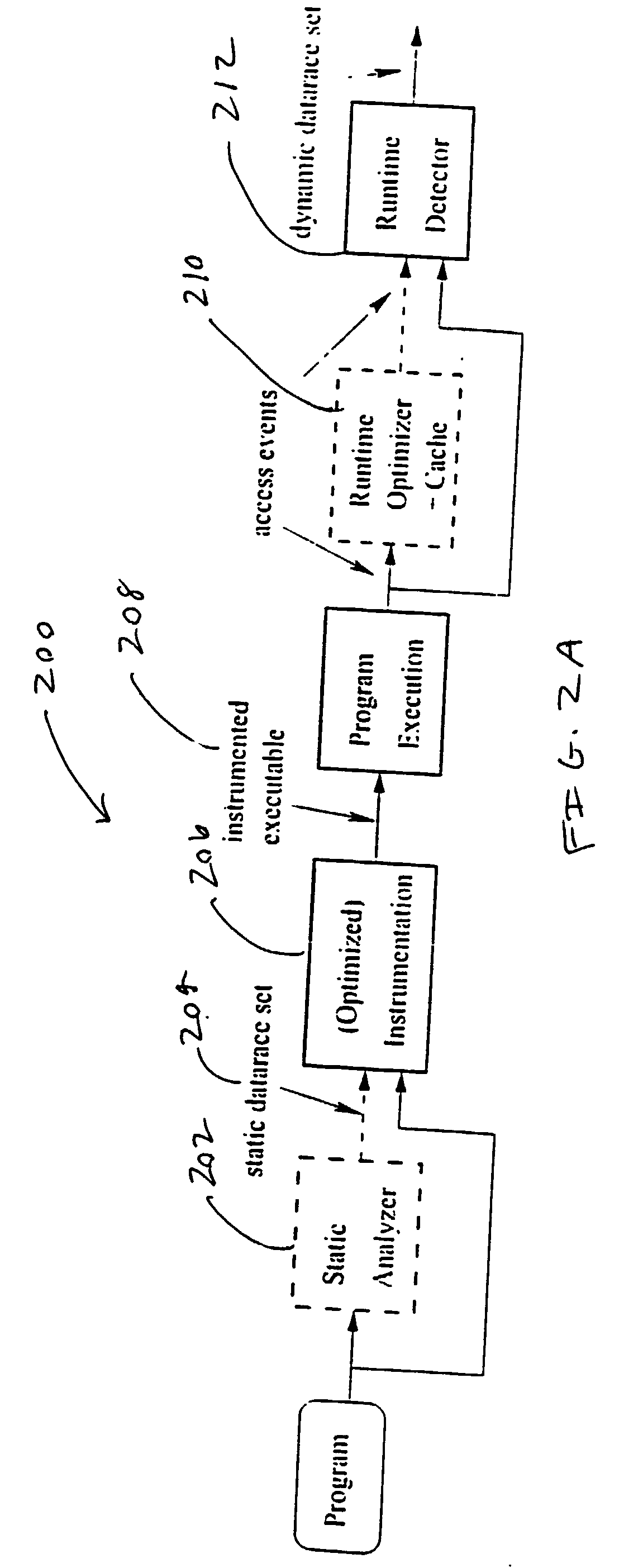Method and apparatus for efficient and precise datarace detection for multithreaded object-oriented programs
a multi-threaded object-oriented, datarace-based technology, applied in the direction of multi-programming arrangements, instruments, program control, etc., can solve the problems of order-of-magnitude overhead, datarace is a programming error, and programs containing dataraces are notoriously difficult to debug
- Summary
- Abstract
- Description
- Claims
- Application Information
AI Technical Summary
Benefits of technology
Problems solved by technology
Method used
Image
Examples
case i
[0090] The edge whose destination is n is labeled with lock identifier 1.sub.n such that 1.sub.n.epsilon.e.L. In this case, e shares at least one lock with all the accesses represented by n and its children. Therefore, there cannot be a datarace with any access represented by the subtree rooted at n, and one does not need to search any deeper in this branch of the trie.
case ii
[0091] Case I does not hold, e.tn.t=t.perp., and e.an.a=WRITE. In this case we have a datarace, since e.t differs from some previous thread which accessed e.m, the intersection of their lock sets is empty, and at least one access was a write. We report the race immediately and terminate the traversal.
case iii
[0092] Neither case I nor II holds, in which case we traverse all children of n.
[0093] 3.2.2 Event History Update
[0094] After checking for races, an exemplary embodiment of the system updates the trie with information about e. If there is already a node n in the trie whose path to the root is labeled with the locks e.L, the system updates n with n.t.rarw.n.te.t and n.a.rarw.e.a. (Such an n can be efficiently found; we maintain the invariant that the label on an edge leading into a node n', under some total order on locks, is less than the labels on the edges leading out of n. This guarantees that we can find the node for lock set e.L in time O(.vertline.e.L.vertline.) by following edges in the order of sorted e.L.) If no such n exists then the system adds nodes and edges to create such an n, setting n.t to e.t and n.a to e.a. Finally, we traverse the trie once more to remove all the stored accesses which are stronger than the newly-added access.
[0095] 3.3 Implementation
[0096] An ex...
PUM
 Login to View More
Login to View More Abstract
Description
Claims
Application Information
 Login to View More
Login to View More - R&D
- Intellectual Property
- Life Sciences
- Materials
- Tech Scout
- Unparalleled Data Quality
- Higher Quality Content
- 60% Fewer Hallucinations
Browse by: Latest US Patents, China's latest patents, Technical Efficacy Thesaurus, Application Domain, Technology Topic, Popular Technical Reports.
© 2025 PatSnap. All rights reserved.Legal|Privacy policy|Modern Slavery Act Transparency Statement|Sitemap|About US| Contact US: help@patsnap.com



